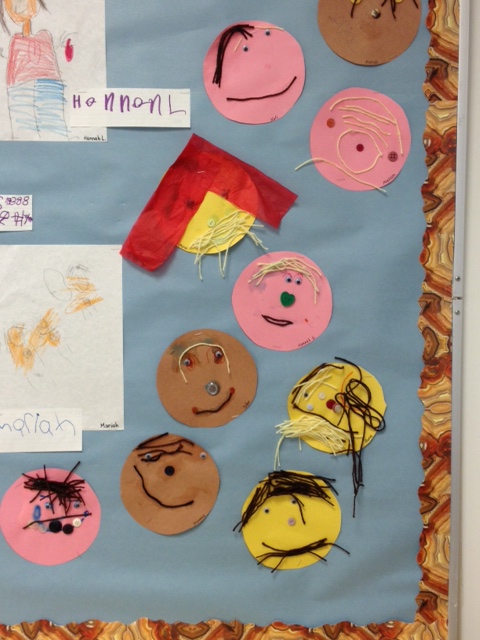Context
Students were asked to select or create a one-act play that examined the theme of identity. This student decided to write a play about how people struggle to reconcile how they view themselves with how others view them.
After writing the play, this student was inspired to continue his exploration of identity. Over the next couple of years, he created additional plays, artwork, and costumes. His body of work explored his own identity, how we project or mask our identities, the role of art in developing and expressing one’s identity, and artists’ identity in relation to their art.
After graduation, he has continued the examination of these themes in his creative work and is currently working to produce one of his plays.
Illustration
Teacher Reflection
During a class assignment, this student developed a deep interest in the theme identity and decided to build a collection of creative work. His dedication to this work included a continual revision process focused on improvement. He continuously looked for ways to expand his thinking, to challenge his own assumptions, and to develop projects that go above and beyond. He created work in multiple disciplines that impacted himself as well as the school and local communities. He took pride in his work and continues to develop this work after graduation.
Student Work Samples
The following drawings reflect how hockey goalies play with their identities and emotions essentially hidden behind their masks, unlike their teammates who wear facemasks that allow their faces, and their emotions, to be seen. In the drawings, the student represents aspects of his own identity that are often hidden by the various masks he wears.

The student created the costume below to represent how people use costumes to convey identity.
The student completed portraits of artists he artistically identified with including Robert Downey Jr as Ironman; The Weeknd; and Lin Manuel Miranda. The artists were selected due to their ability to create and convey emotions through their creative work.
Student Reflection
I have found art a way to put myself into all of my work, exploring themes I found interesting, using different mediums to express myself and sharing the knowledge I have accrued as part of my journey with my peers and audience. I have often turned what would have been regular projects into thought provoking assignments intended to raise interesting questions. For example, I compared historical figures to characters from popular fiction in Social Studies essays and political cartoons (e.g., an essay “Louis Riel is Batman”), used different mediums to turn scientific diagrams into edible 3D models (e.g., a plant cell made of Jell-O), and parodied popular songs to bring a new life to dead presentations (e.g., Light and Lens - Thrift Shop parody). I think the challenge of trying to present information in a creative way has not only bettered my own understanding of the material but helped my peers to understand it better as well.
In Drama class, we were given the opportunity to perform one-act plays as part of a competition. I wrote, directed, choreographed, made music for, and acted in a 40-minute original rap musical, Painter and the Painted (PDF). In the play, an artist “who never had a chance to truly shine, now gets his chance when one of his works of art, one he doesn't like, makes him famous.” He and his creation debate the question of who made who. It explores the questions, Is the artist’s creation a true reflection of himself? and “What is the relationship between an artist and his art?
I had to learn and utilize new art forms, memorize lyrics and dance routines, build large-scale props, and perform, all within the very limiting time constraints of a month. I achieved this by doing countless hours of research and rehearsal, and sometimes, creative corner-cutting. Where I could not bring my vision to life, I would improvise, adapt, and improve within the new found art forms I was learning.
In the first performance I had to improvise song lyrics and choreography on stage due to unforeseen challenges but the audience applauded. Audience members seemed interested in the intense debate between the creator and the created in the play. I developed even more dedication to my craft following this success.
I later wrote a larger scale original two-act play titled Masterpiece (PDF), and worked with a peer to produce it. I found that directing and organizing a production with a larger cast provided scheduling, efficiency, and social conflicts. I had to creatively arrange scenes and adapt the play to meet the needs of the cast and crew, as well as work to make production run as smoothly as possible. We successfully did a string of performances that raised money for the school’s drama program.
Art is integral to finding oneself. My goal is to showcase that to my audience.









